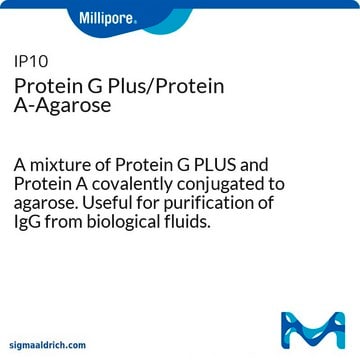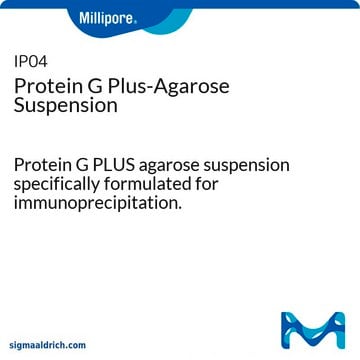IP05
Protein G Plus/Protein A Agarose Suspension
Protein G PLUS/Protein A-Agarose mixture specifically formulated for immunoprecipitation.
Sinónimos:
Affinity resin, Protein G/Agarose
About This Item
Productos recomendados
formulario
slurry (Liquid)
contiene
≤0.1% sodium azide as preservative
fabricante / nombre comercial
Calbiochem®
condiciones de almacenamiento
do not freeze
técnicas
protein purification: suitable
idoneidad
suitable for microbiology
Condiciones de envío
wet ice
temp. de almacenamiento
2-8°C
Descripción general
Aplicación
Advertencia
Forma física
Otras notas
Información legal
Código de clase de almacenamiento
11 - Combustible Solids
Clase de riesgo para el agua (WGK)
WGK 1
Punto de inflamabilidad (°F)
Not applicable
Punto de inflamabilidad (°C)
Not applicable
Certificados de análisis (COA)
Busque Certificados de análisis (COA) introduciendo el número de lote del producto. Los números de lote se encuentran en la etiqueta del producto después de las palabras «Lot» o «Batch»
¿Ya tiene este producto?
Encuentre la documentación para los productos que ha comprado recientemente en la Biblioteca de documentos.
Los clientes también vieron
Contenido relacionado
We manufacture IP and antibody purification agarose beads that purify immunoglobulins and IgG fractions. Our kits also provide a total antibody purification process
Nuestro equipo de científicos tiene experiencia en todas las áreas de investigación: Ciencias de la vida, Ciencia de los materiales, Síntesis química, Cromatografía, Analítica y muchas otras.
Póngase en contacto con el Servicio técnico











